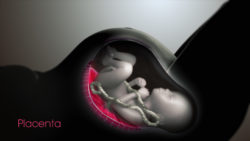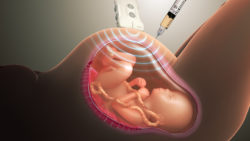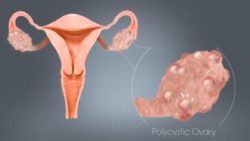Small hips and big heads are ideal for running and thinking, but certainly not for childbirth.
There’s a reason human childbirth is an extremely strenuous and intensive process: A human baby’s head is designed to just barely squeeze through a mother’s pelvis. So the primary reason that accounts for most C-section surgeries worldwide is simple: Baby’s head is too large or mother’s pelvis is too narrow, a condition known as “fetopelvic disproportion.”
Going by the laws of natural selection, this discrepancy should, therefore, be corrected by nature’s forces. However, humans seem to have fought these forces and follow their own path of evolution. Scientists speculate this is the reason why C-section procedure has become commonplace in the past few decades: rising from 5% to 30% in the US alone. Though so far it’s only a mathematical theory.
Before C-sections gained momentum, large-headed babies and their narrow-hipped mothers had a good chance of dying during childbirth, clearly implying that their genes weren’t propagated. But because C-sections tend to save those babies, the genes that contribute to a scenario of fetopelvic disproportion have continued to pass on.
So what’s the theory?
Birth data numbers over the past half-century has revealed the growth of global rate of fetopelvic disproportion from 3% of births in the 1960s to 3.3% of births today, a rate of increase of 10 to 20 percent, depending on which births are included or not.
Selection pressure has favored bigger heads and smaller pelvises to make room for bigger brains and ease bipedal locomotion. However, this has resulted in tight-fitting childbirth.
Nature, hence, has found an optimal middle ground that operates most of the time. That middle ground has limited the degree to which our hips can grow narrow or our heads can expand.
The study by a team from Austria and the US, led by Philipp Mitteroecker, used a mathematical model to show that increased use of cesareans had accounted for an increase in the size of babies relative to women's pelvic canals. Bigger babies are now more likely to survive and the number of babies dying in childbirth has dropped significantly.
In the words of Mitteroecker, "The simple mathematical model depicts that weak directional selection for a large neonate and a narrow pelvic canal account for the considerable incidence of fetopelvic disproportion.”
However, the team also admits there may be other factors (such as changes in diet over the generations) at work that could be partly responsible for the mismatch between unborn baby size and pelvis width.

The Super-organ We’ve Been Neglecting Till Now
Placenta is an under-appreciated and an understudied organ. It is the only organ we grow and discard and grow again.” says the acting director of the National Institute of Child Health and Human Development (NICHD). Read More..

What is an Amniocentesis?
Amniocentesis or "puncture of the amnion," refers to the process of aspirating an ounce of amniotic fluid that surrounds the fetus in the mother’s womb. The amnion is a thin-walled sac of fluid in which a developing fetus is suspended during pregnancy. Read More..

PCOS: A Mysterious Disorder
The most common hormonal problem in women, Polycystic Ovarian Syndrome (PCOS), is originally known as Stein-Leventhal syndrome named after two American gynecologists who described this condition. Read More..









